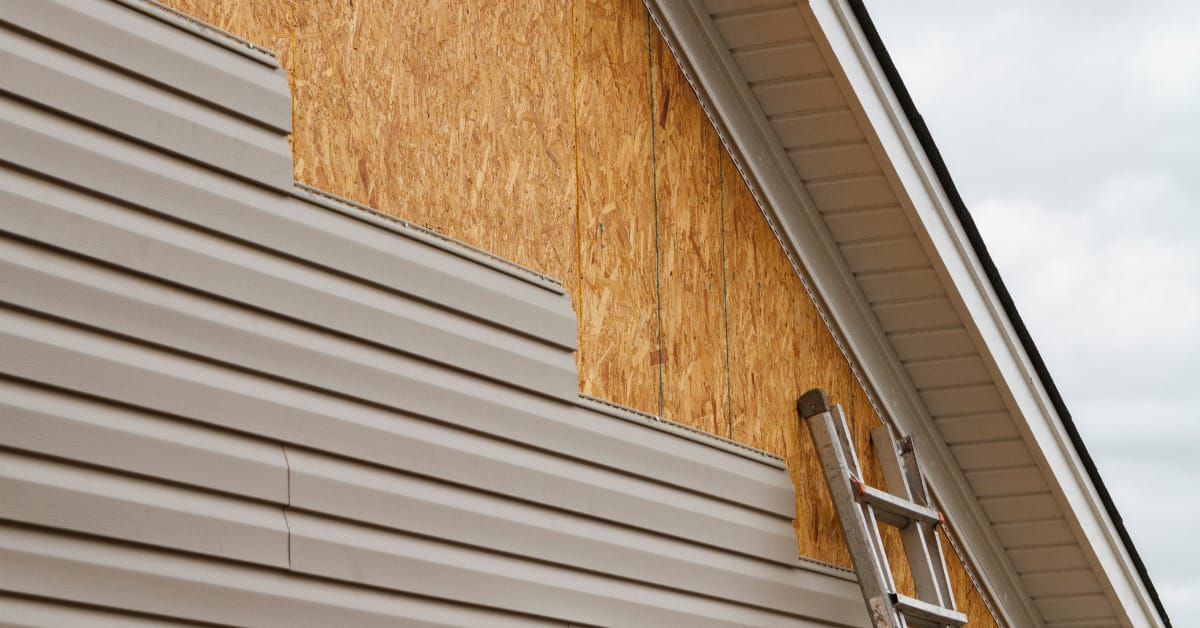-
Vinyl siding might be affordable and aesthetically versatile, but it isn’t built for extreme Texas weather.
-
It can warp in heat, crack in the cold, and take damage from hail or flying debris.
-
Even high-end or insulated options don’t match the resilience of fiber cement or metal.
Vinyl siding is popular in many parts of the country. And it’s little wonder why. It’s lightweight, affordable, and it comes in plenty of color and texture options. But it isn’t ideal in Texas, where we see harsh sunlight, sharp cold snaps, sudden hailstorms, and plenty of rainstorms. In this article, we’ll take a closer look at where vinyl siding makes sense, where it tends to fall short, and why we don’t install it ourselves here at DFW Roofers.
What Vinyl Does Well
Let’s start with why vinyl siding has such appeal. It’s one of the cheapest materials you can buy. It doesn’t rot like wood siding. It installs quickly. And it’s highly customizable to fit just about any color or texture you could want, even imitating wood grain. Vinyl also doesn’t attract termites or carpenter ants, which is a big plus in humid and critter-prone climates.
Most vinyl siding is made from PVC with a capstock layer to help preserve color. There are also “insulated” vinyl siding options, which include a foam backing that adds some strength and boosts energy efficiency.
Most vinyl siding systems are also designed to shed moisture through weep holes at the bottom edge of each panel. When paired with housewrap, that setup can help prevent water issues in humid or rainy weather.
Still, when it comes to durability, vinyl can’t rival fiber cement or metal siding. Fiber cement holds its shape in high heat, doesn’t warp, and resists rot, pests, and fire. Metal goes a step further with a very long lifespan, better impact resistance against hail or debris, and very little maintenance. That’s a difference that matters a lot more than the upfront price.
Why Vinyl Falls Short in Texas
But here’s the issue: Texas weather is very tough. In mild weather, vinyl might be a smart budget choice. The Lone Star State’s harsh sunlight, heavy storms, and frigid cold fronts are too much for vinyl to bear. That’s why we don’t install it. We’ve seen too many jobs come apart: warped panels from heat, cracks from cold snaps, broken sections after hail—you name it.
The biggest issue is temperature fluctuation. Vinyl expands and contracts a lot, so it’s installed loosely on purpose. But in triple-digit heat or hard freezes, that movement really stresses the material. You’ll often see bowing, popped nails, or cracks along the edges.
Vinyl also doesn’t hold up well to impact. Whether it’s hail, tree limbs, or flying debris, vinyl can crack or puncture more easily than other materials. And once a piece breaks, there’s no patching. It needs to be replaced. Even insulated vinyl, while tougher, doesn’t perform like fiber cement or metal. And once the price climbs into premium territory, it’s best to consider better materials anyway.
Vinyl might make sense in parts of the country with gentler weather, but around here, it just doesn’t go the distance. For homeowners who want low maintenance and long-term peace of mind, we usually recommend fiber cement or metal. They cost more upfront, but they handle Texas conditions better and hold up longer.
We’re Here to Help
Need more information about home siding in Texas? If you have any questions or need assistance with damage, contact DFW Roofers at (469) 751-4018 or schedule an appointment through our online appointment form.


